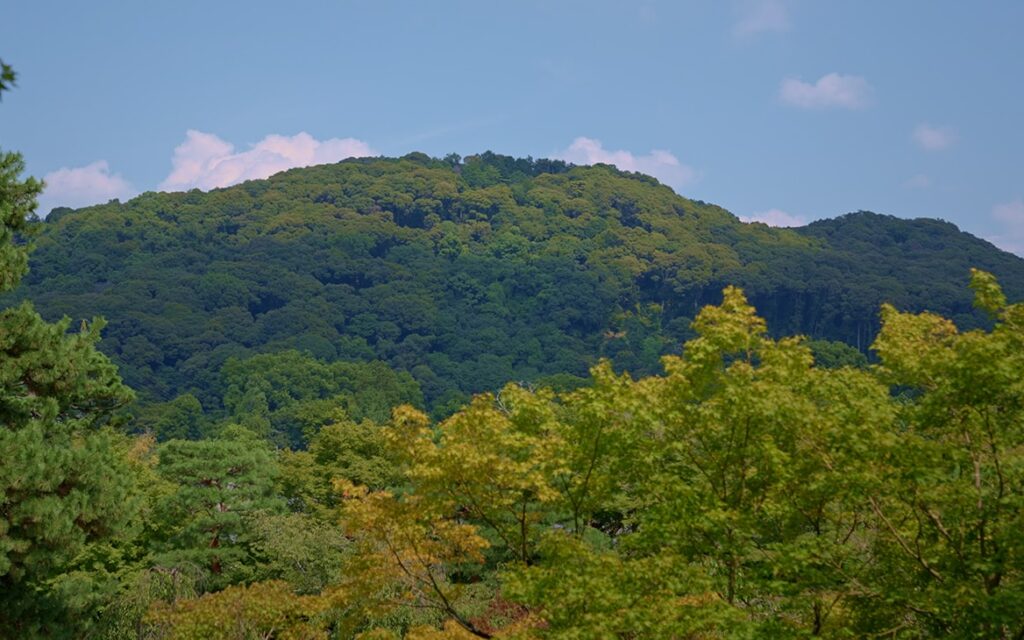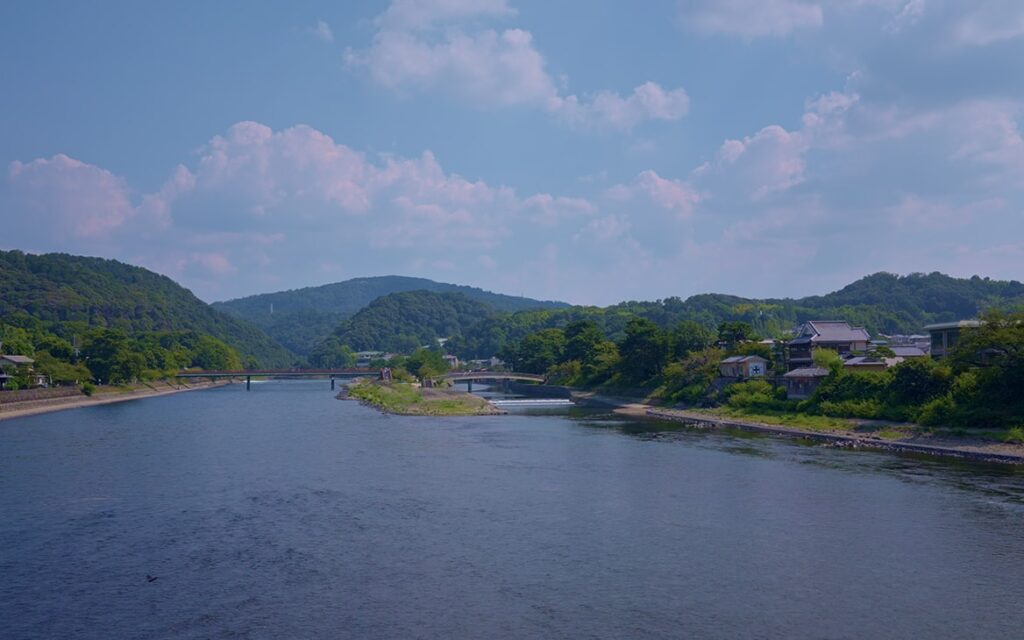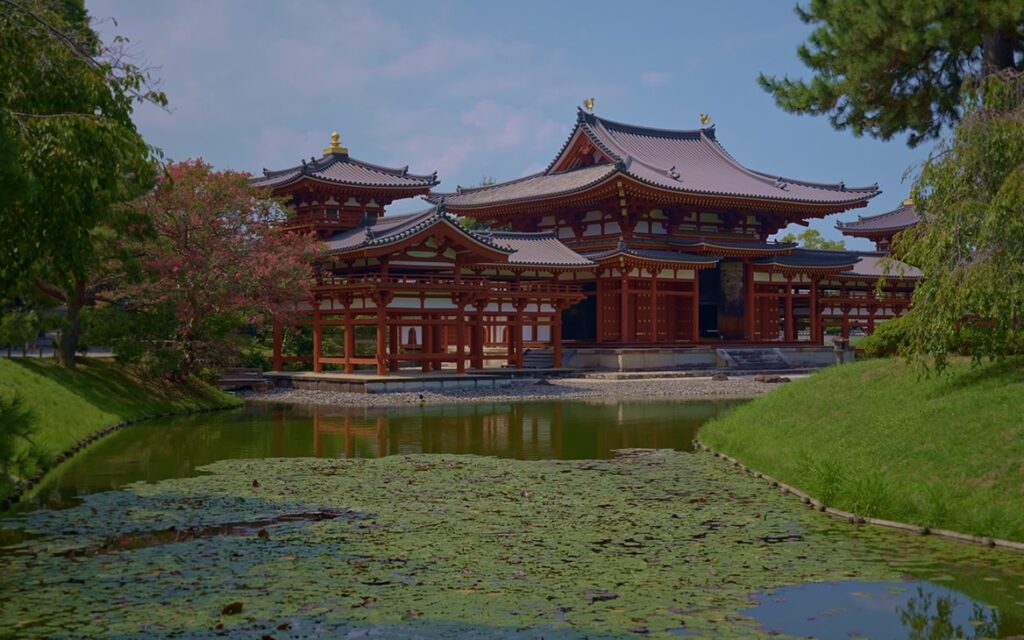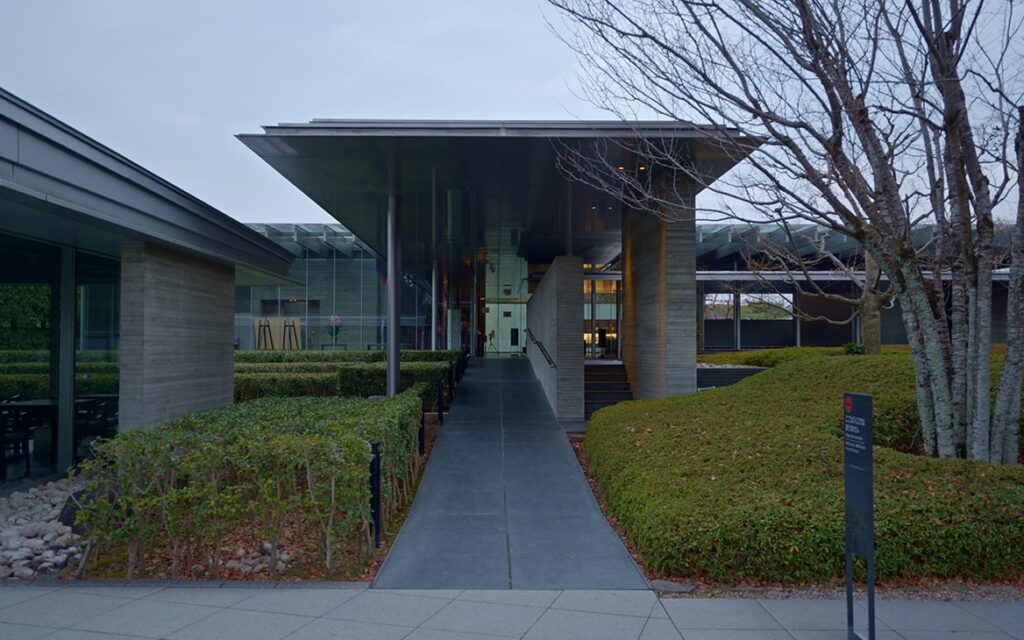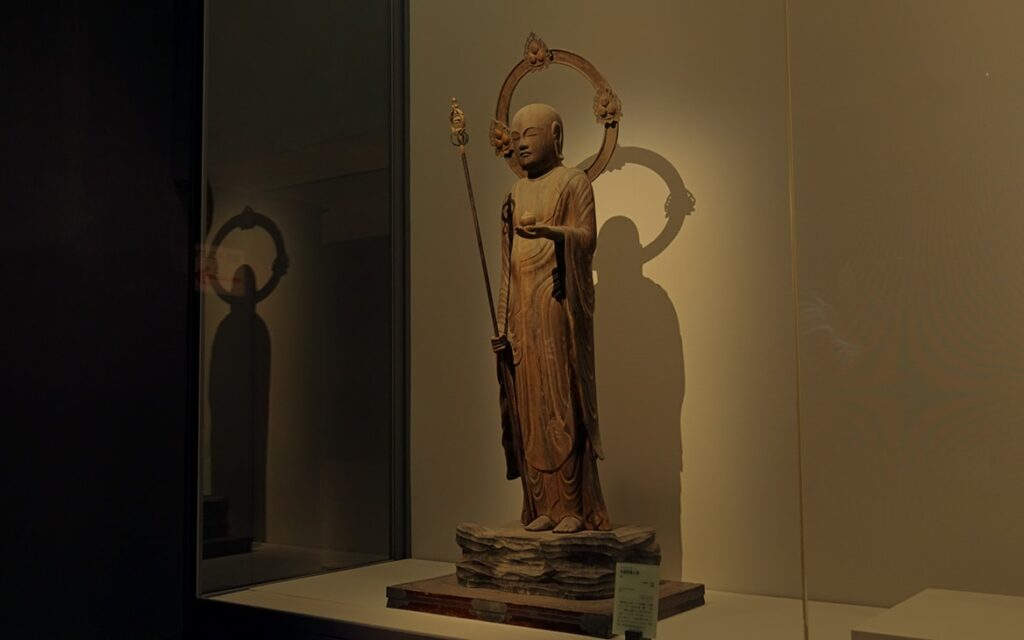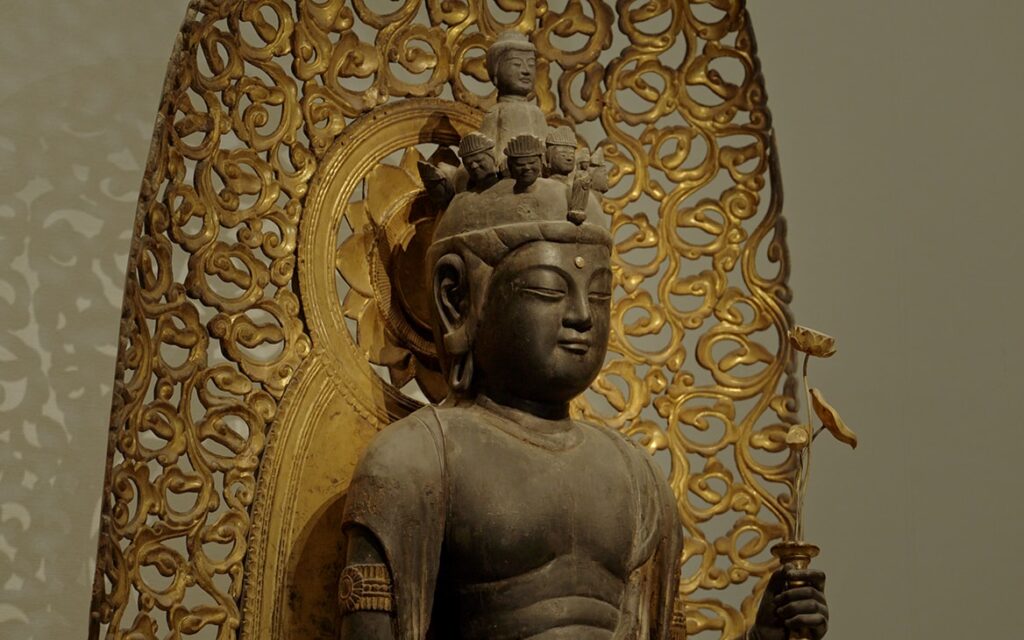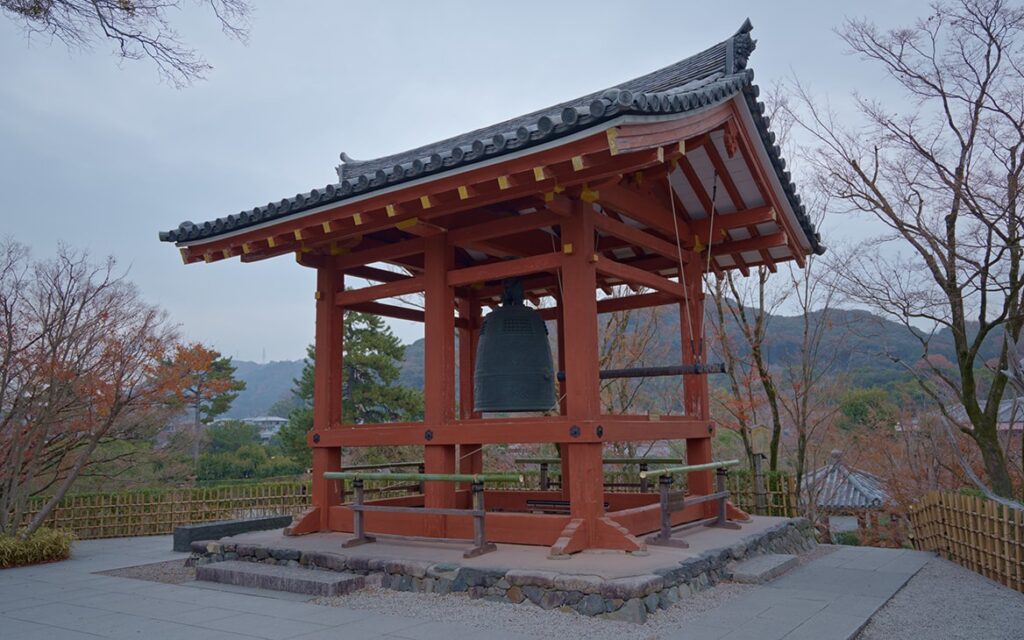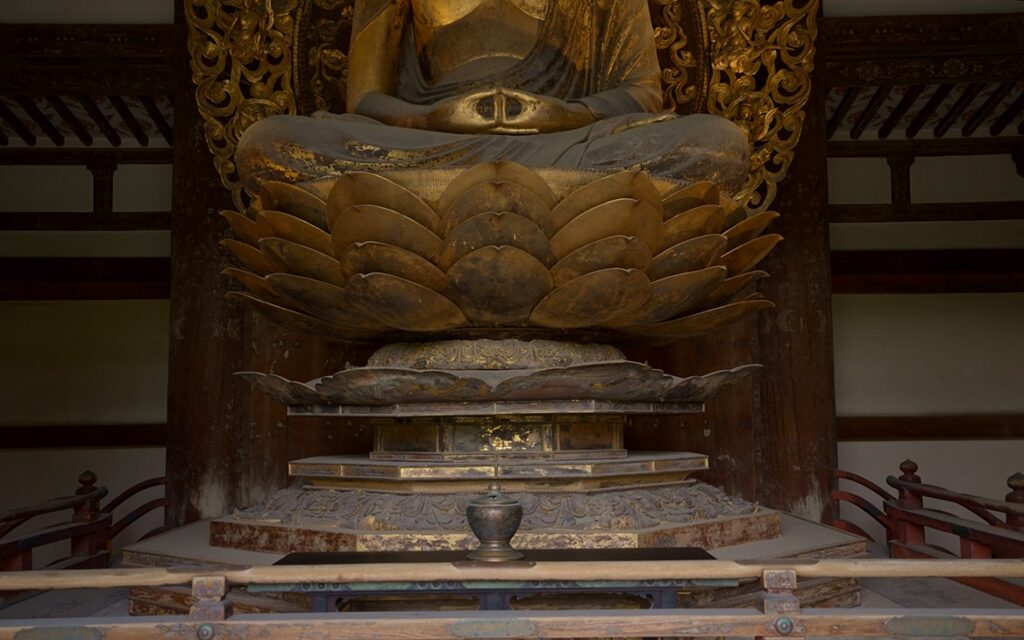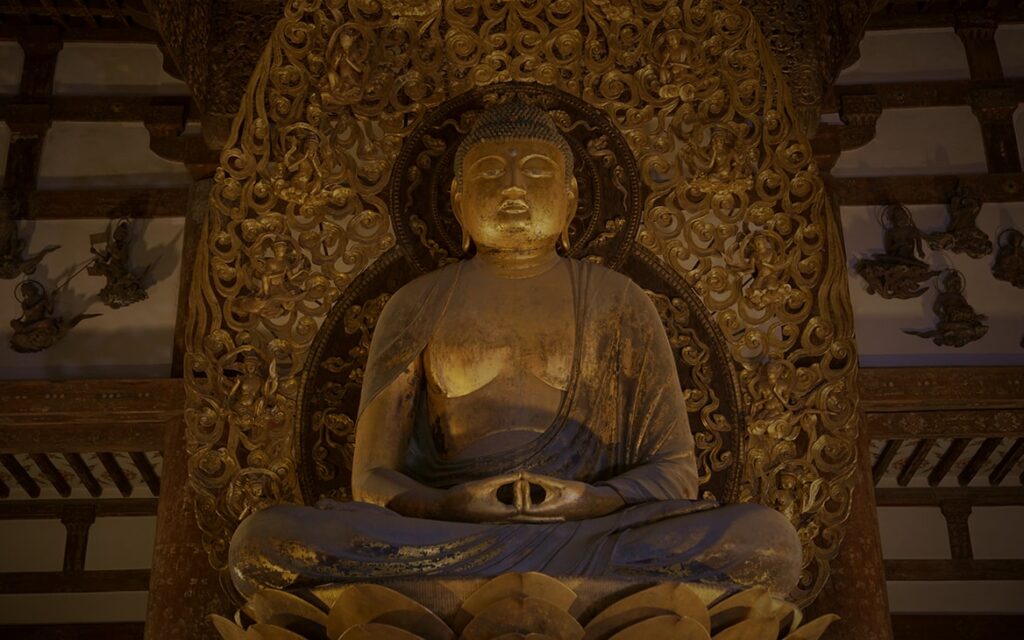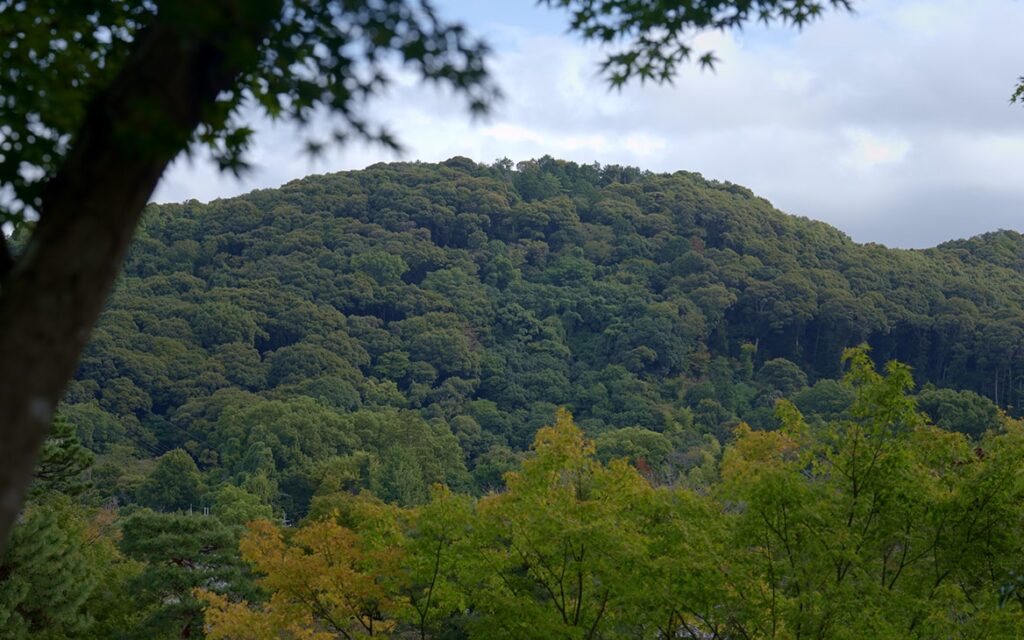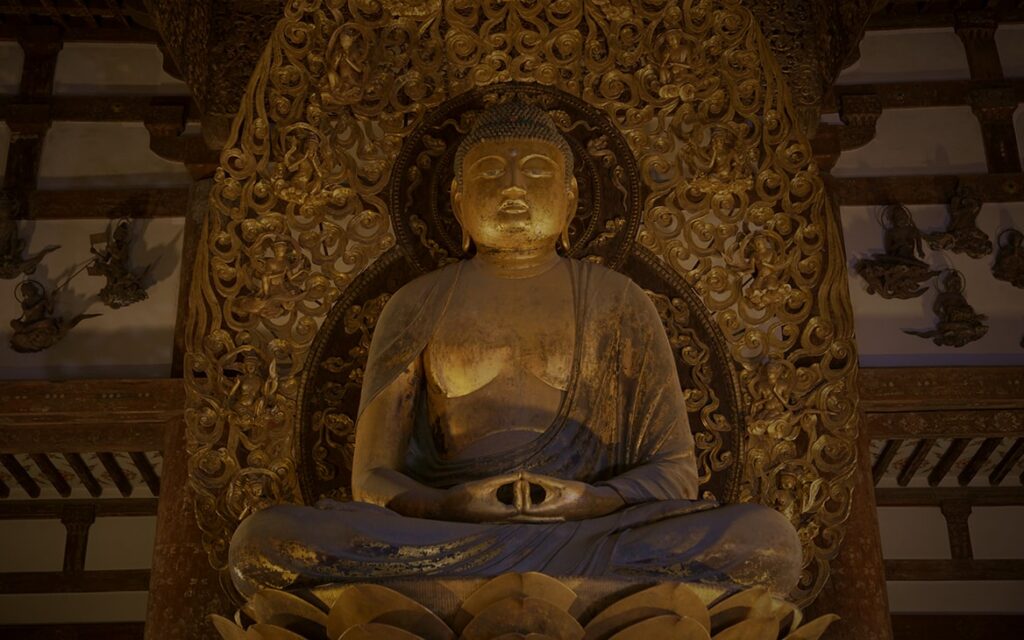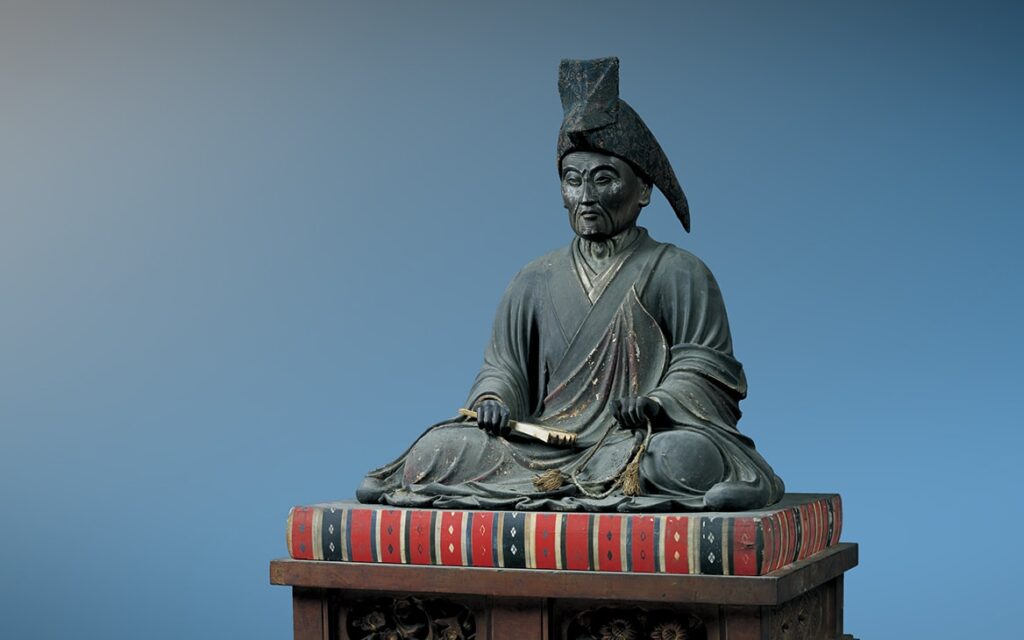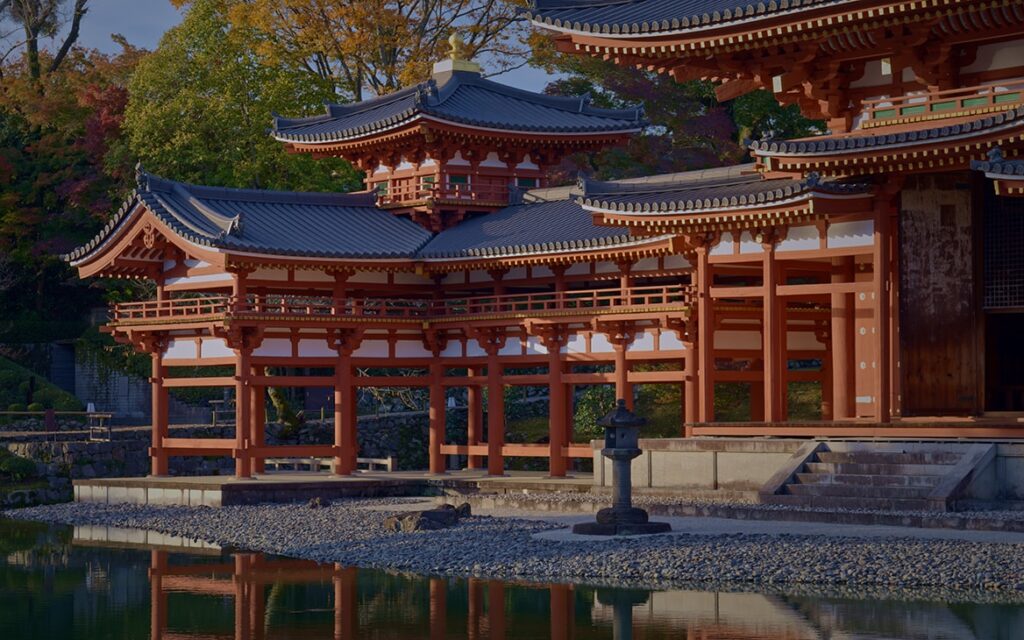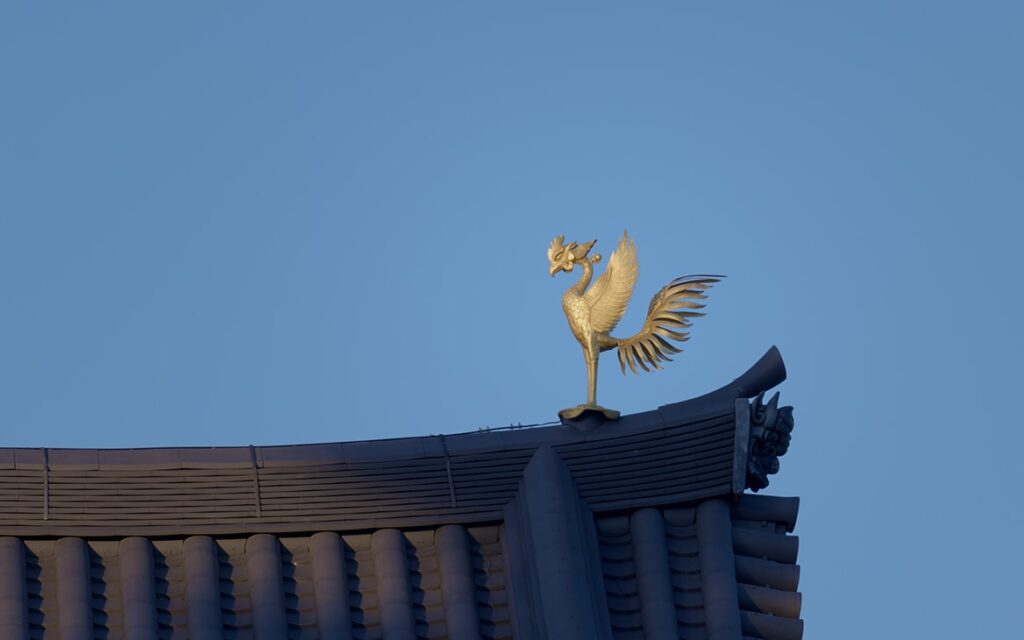Byodoin Garden
Historic Site, Place of Scenic Beauty, Natural Monument
Heian period
Byodoin Garden
Audio Guide Playing
Note: Please use the audio guide with headphones and be careful not to disturb others.
Byodoin Temple garden is the finest surviving example of the Jodo Garden style that flourished during the Heian period (794–1185). Jodo gardens attempted to represent on earth the Pure Land (Jodo) of Amida (Sk. Amitabha) Buddha. The Phoenix Hall, other buildings of the compound, the Aji-ike Pond, Uji River and the mountains behind all came together to create a vivid representation of the perfect realm of the Pure Land to which the aristocrats of the Heian period so devoutly aspired. The garden also serves as an idealized expression of the true relationship between man and nature. A garden of this kind is described as ideal in the Sakuteiki (thirteenth century), considered to be one of the world’s oldest works on the creation of gardens. This manual is thought to have been written by Tachibana no Toshitsuna, the second son of the Fujiwara no Yorimichi who transformed the villa into a temple in 1052. It is unclear whether Tachibana no Toshitsuna used Byodoin as his model when writing his manual, but the garden and buildings are very close to the description of the ideal garden that appears in the Sakuteiki. They clearly manifest a strong desire on the part of those who created them to offer a representation here on earth of the distant, celestial Pure Land. The Byodoin garden is the oldest Jodo garden still remaining from the Heian period and has been designated as both a national Historic Site and Place of Scenic Beauty.
Tachibana no Toshitsuna
The third son of Fujiwara no Yorimichi, he was adopted by Tachibana no Toshito. Influenced by his father Yorimichi, he developed a deep understanding of garden landscapes.
Cultural Heritage Featuring This Term
Sakuteiki
Written during the Heian period, this is the oldest known Japanese garden manual.
Cultural Heritage Featuring This Term
Aji-ike pond
In esoteric Buddhism, the first letter of the Bonji (Siddham script) for a short "a" sound is used to represent the truth of all universal phenomena being unborn and undying. This garden is designed to mirror the jeweled pond in the realm of the Dainichi Nyorai (Vairocana Buddha). It is created with prayers for the Western Pure Land. At the center of the pond lies an island, upon which is built the palace of Amida Buddha. It is said that the pavilion appears to float upon the jeweled pond of paradise.
Cultural Heritage Featuring This Term
Jodo Garden
A form of Japanese garden constructed from the Heian period (749–1185) through the Kamakura period (1185–1333).
Cultural Heritage Featuring This Term
bodhisattva
One who undergoes extensive training in pursuit of Buddha’s enlightenment in order to save all beings.
Cultural Heritage Featuring This Term
Jizo
Associated with compassion and healilng, it is believed that Jizo Bodhisattva came to the world to save the people during the period between the death of Shakyamuni and the advent of Maitreya Bodhisattva, who would bring salvation.
Cultural Heritage Featuring This Term
Eleven-Headed Kannon
A deity revered since the Nara period. The eleven heads allow Kannon to gaze in all directions to alleviate the suffering of people.
Cultural Heritage Featuring This Term
side pavilion (tsuridono)
One of the main structures in the shinden-zukuri architectural style. It is an open building without walls or doors, facing the pond.
Cultural Heritage Featuring This Term
Tenpyo period
The period from 729 to 749, during the reign of Emperor Shomu. The term Tenpyo Culture denotes the flourishing aristocratic and Buddhist culture centered around the capital city of Heijo-kyo in Nara.
Cultural Heritage Featuring This Term
Cultural Heritage Featuring This Term
Kamakura period
The name of the period that lasted for approximately 150 years from when Minamoto no Yoritomo founded the Kamakura Shogunate in 1192 until Hojo Takatoki’s death in 1333.
Cultural Heritage Featuring This Term
yosegi-zukuri
A wood sculpting technique in which multiple pieces of wood are combined to create the head and torso of a statue. This method involves hollowing out the interior to reduce weight, allowing for the construction of large statues with minimal wood, among other advantages. It is a technique unique to Japan and was perfected from the mid to late Heian period (794–1185).
Cultural Heritage Featuring This Term
Jocho
A mid-Heian period (749–1185) Buddhist sculptor and son of Kojo. He was honored with the rank of hokkyo for his significant contributions to the creation of Buddhist images at Hojo-ji. The only still-existing work attributed to him is the seated statue of Amida Buddha in the Phoenix Hall of Byodoin. Jocho is credited with perfecting the yosegi-zukuri (joined-wood) technique in Buddhist statuary.
Cultural Heritage Featuring This Term
Age of Mappo
A perspective on the ages in Buddhism divides time into three periods: the Age of the True Law (Shobo), the Age of the Copied Law (Zobo), and the Age of No Law (Mappo). The Age of Mappo is a time when, despite human efforts to practice correctly, only the teachings remain, and enlightenment cannot be attained.
Cultural Heritage Featuring This Term
Pure Land (Jodo) devotees
The belief in being reborn in the Pure Land, where Buddhas and Bodhisattvas reside. The Pure Land includes the Western Paradise of Amida Buddha, the Lapis Lazuli Pure Land of Yakushi Nyorai, the Tusita Heaven of Maitreya Bodhisattva, and the Mount Potalaka of Kannon.
Cultural Heritage Featuring This Term
Cultural Heritage Featuring This Term
Pure Land (Jodo)
The term refers to the Pure Land presided over by Amida Buddha. It lies far to the west, separated from the human world by 10 thousand billion Buddha realms. It is depicted as a tranquil world free from worldly desires, where lotus flowers bloom abundantly.
Cultural Heritage Featuring This Term
Fujiwara no Yorimichi
Born between 992 and 1074, Fujiwara no Yorimichi was the son of Fujiwara no Michinaga and Rinshi, the daughter of Minamoto no Masanobu. He served as chief advisor for three emperors including Go-Suzaku and Go-Reizei. In 1027, he succeeded his father Michinaga and acquired the Uji estate, and in 1052 he constructed the main hall and named it Byodoin.
Cultural Heritage Featuring This Term
Heian period
The Heian period lasted for approximately 400 years between the transfer of the capital to Heian-kyo (present day Kyoto) by Emperor Kanmu in 794 and the foundation of the Kamakura Shogunate in 1185. The period is often divided into three sections: the Early, Mid- and Late Heian periods. In other words, the period of reviving the political system based on Ritsuryo codes, the regency period and the Insei period (governed by a retired emperor), respectively. (The end of the Late Heian period was ruled by the Taira clan.) Also referred to as the period of the Heian imperial court.
Cultural Heritage Featuring This Term
-
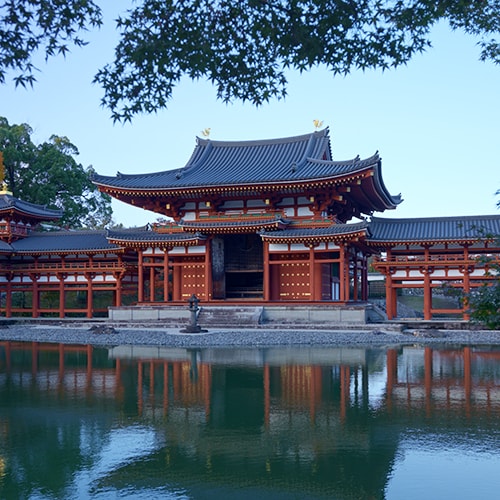
Phoenix Hall
- View Details
Audio Guide
Phoenix Hall
Audio Guide Playing
Note: Please use the audio guide with headphones and be careful not to disturb others.
Close
-
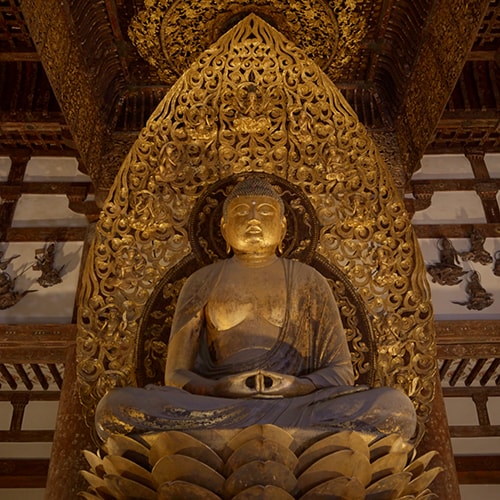
Amida Buddha
- View Details
Audio Guide
Amida Buddha
Audio Guide Playing
Note: Please use the audio guide with headphones and be careful not to disturb others.
Close
-
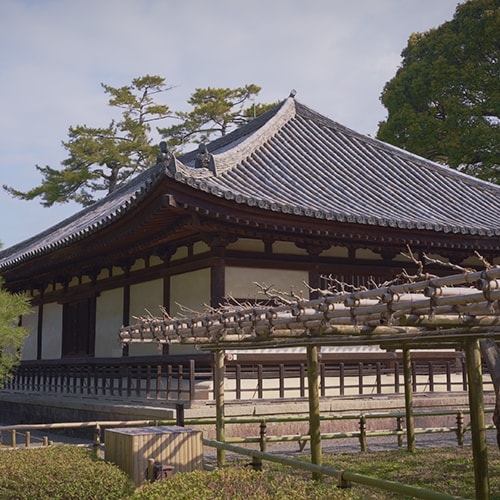
Kannondo Hall
- View Details
Audio Guide
Kannondo Hall
Audio Guide Playing
Note: Please use the audio guide with headphones and be careful not to disturb others.
Close
-
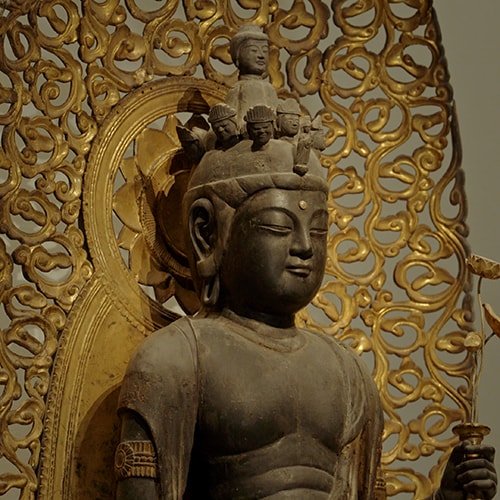
Eleven-Headed Kannon
- View Details
Audio Guide
Eleven-Headed Kannon
Audio Guide Playing
Note: Please use the audio guide with headphones and be careful not to disturb others.
Close
-
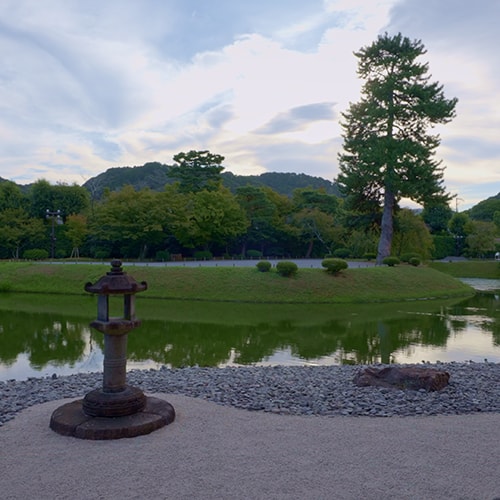
Byodoin Garden
- View Details
Audio Guide
Byodoin Garden
Audio Guide Playing
Note: Please use the audio guide with headphones and be careful not to disturb others.
Close

